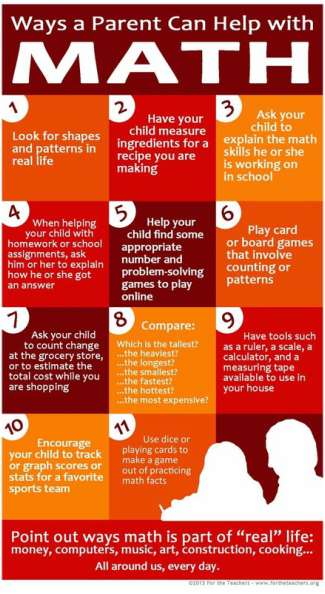Why is Math Taught Differently Now?
|
Why is math taught differently now?
We want to teach students to be creative, flexible with number, fluent with calculation, and engaged problem-solvers. The 2007 Alberta K-9 Mathematics Program of Studies states, “The main goals of mathematics education are to prepare students to:
|
|
A video presentation of our Parent Math Night to explain how math is being taught as well as some personal strategies students may be using for addition, subtraction, multiplication, and division.
Parent Math NightDan Meyer taught high school math to students who didn't like high school math. He advocates for better math instruction. He speaks internationally and was named one of Tech & Learning's 30 Leaders of the Future.
Dan Meyer
|
A video presentation of our Early Numeracy Night to explain how to help develop number sense in young children (3-5 years old).
Early Numeracy Night
Jo Boaler is named by the BBC as one of eight people who are challenging the future of education with concrete solutions to transform students' math experiences that are linked to brain research.
Jo Boaler
|
Dr. James Tanton is a research mathematician with a PhD from Princeton, a former high school teacher and a presenter who makes the most complex mathematics make so much sense.
James TantonWhy is math taught so differently now?Dr. Raj Shah explains why math is taught differently than it was in the past and helps address parents' misconceptions about the "new math".
Raj Shah
|
More ways to help you child develop number sense:
Facing the Facts, by Annette Rouleau
https://docs.google.com/document/u/1/d/1ZP8s89CeTB8XfgN_Opu7TGKM3xF65cP7oAvOFHo3Z4E/mobilebasic?pli=1
"Math Wars" - I emphatically support what is best for our students: developing deep-thinking, confident, real learners of mathematics who understand numbers and their connections, and who can solve problems in creative ways. I want my students to see the beauty of math, enjoy the challenge of problem solving, and feel the joy of deep understanding.
|
| ||||||||||||
